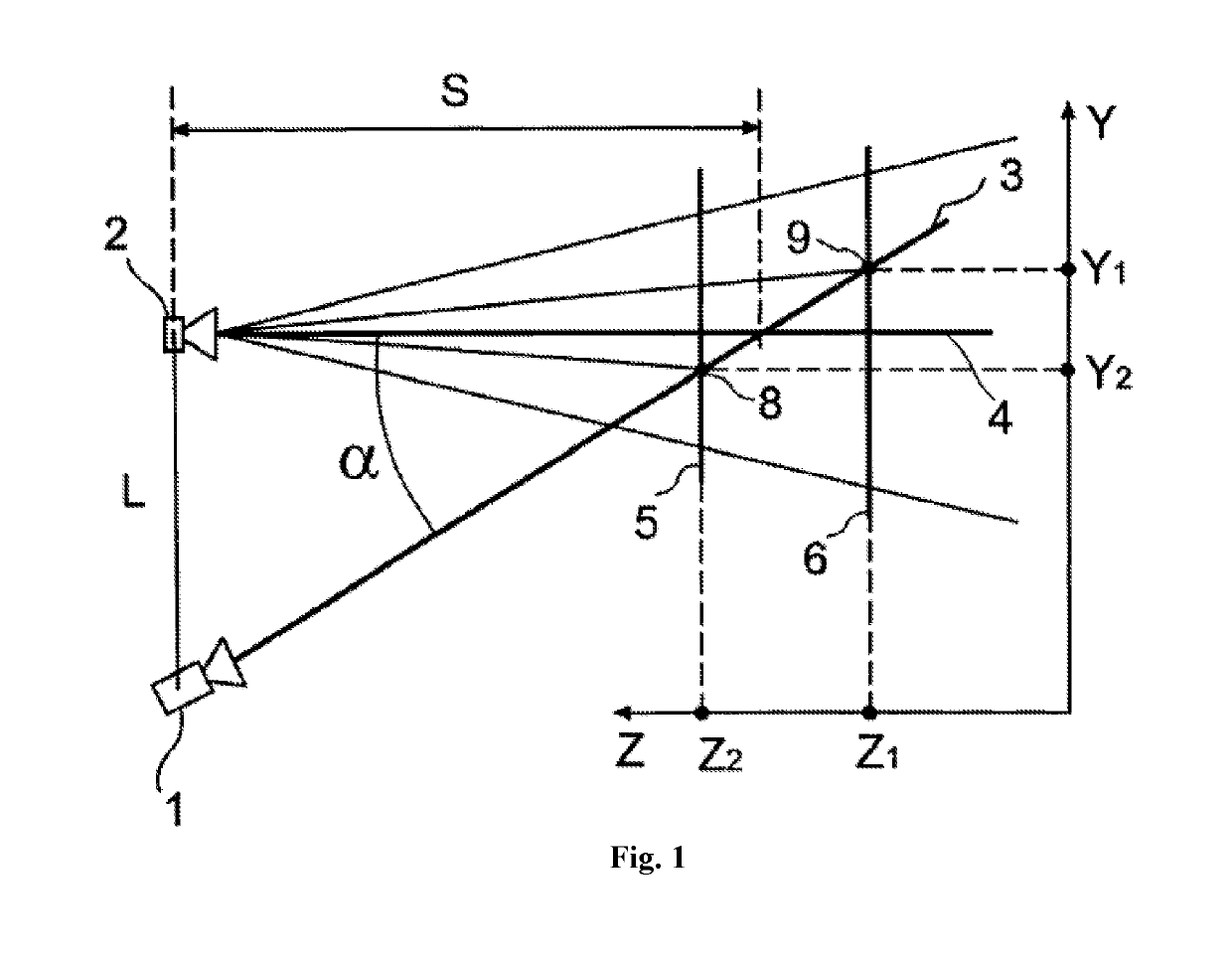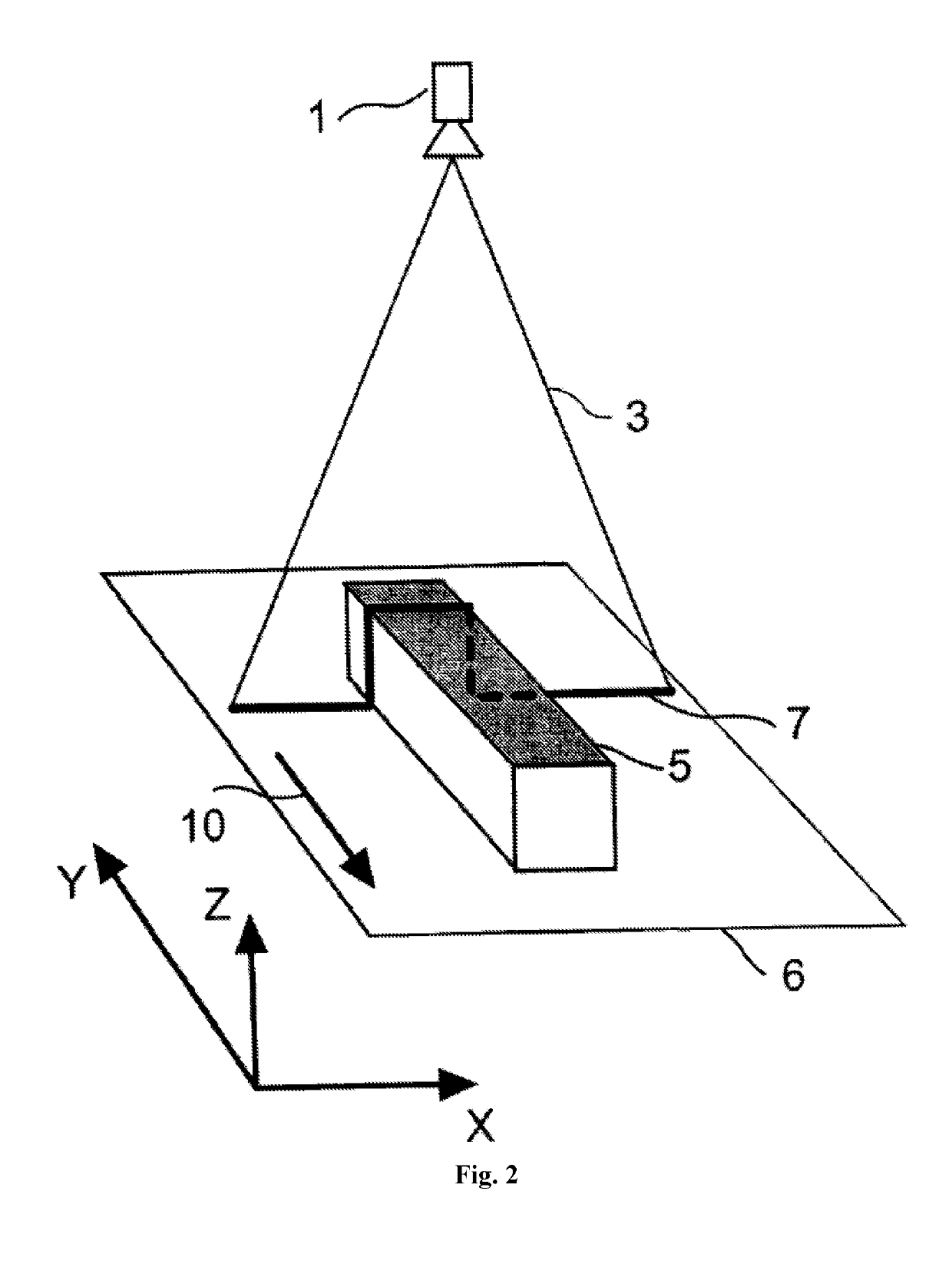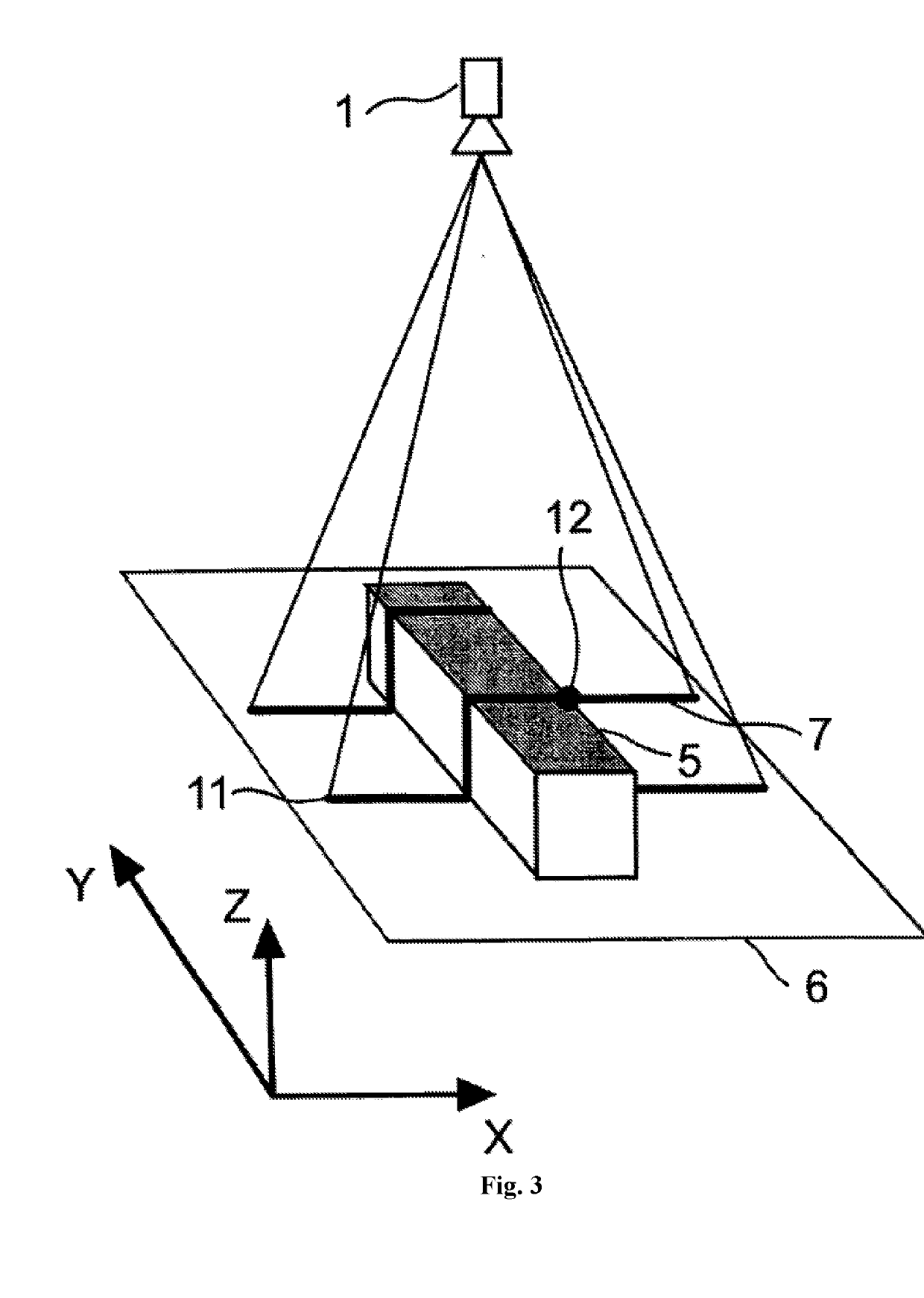Method for monitoring linear dimensions of three-dimensional objects
- Summary
- Abstract
- Description
- Claims
- Application Information
AI Technical Summary
Benefits of technology
Problems solved by technology
Method used
Image
Examples
Embodiment Construction
[0029]FIG. 1 shows a device comprised of projection unit 1 which projects the predetermined image onto the object and the camera 2 recording and transmitting to the computer (not shown) the light emitted by projection unit 1 and reflected from the object, at a certain triangulation angle α (angle between the central beam of the projection unit 3 and central beam 4 of camera 1.
[0030]The distance L between the camera and the projection unit is called the base. The base can be chosen as follows.
[0031]L=s*tg α, where s is the distance from the projection unit to the intersection point of the central beams of the projection unit and the camera (m).
[0032]In the simplest case, projection unit 1 projects one horizontal band 3 which coincides with the central beam of the projection unit in FIG. 1. FIG. 2 is a view from camera 2. FIG. 2 shows the way band 3 is distorted due to the curvature of the object shown as planes 5 and 6, and a trace 7 of the reflected band 3 is seen in the image of ca...
PUM
 Login to View More
Login to View More Abstract
Description
Claims
Application Information
 Login to View More
Login to View More - R&D
- Intellectual Property
- Life Sciences
- Materials
- Tech Scout
- Unparalleled Data Quality
- Higher Quality Content
- 60% Fewer Hallucinations
Browse by: Latest US Patents, China's latest patents, Technical Efficacy Thesaurus, Application Domain, Technology Topic, Popular Technical Reports.
© 2025 PatSnap. All rights reserved.Legal|Privacy policy|Modern Slavery Act Transparency Statement|Sitemap|About US| Contact US: help@patsnap.com



